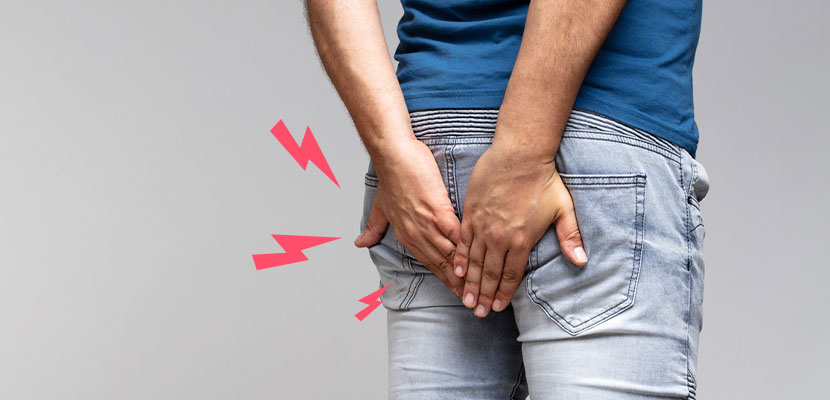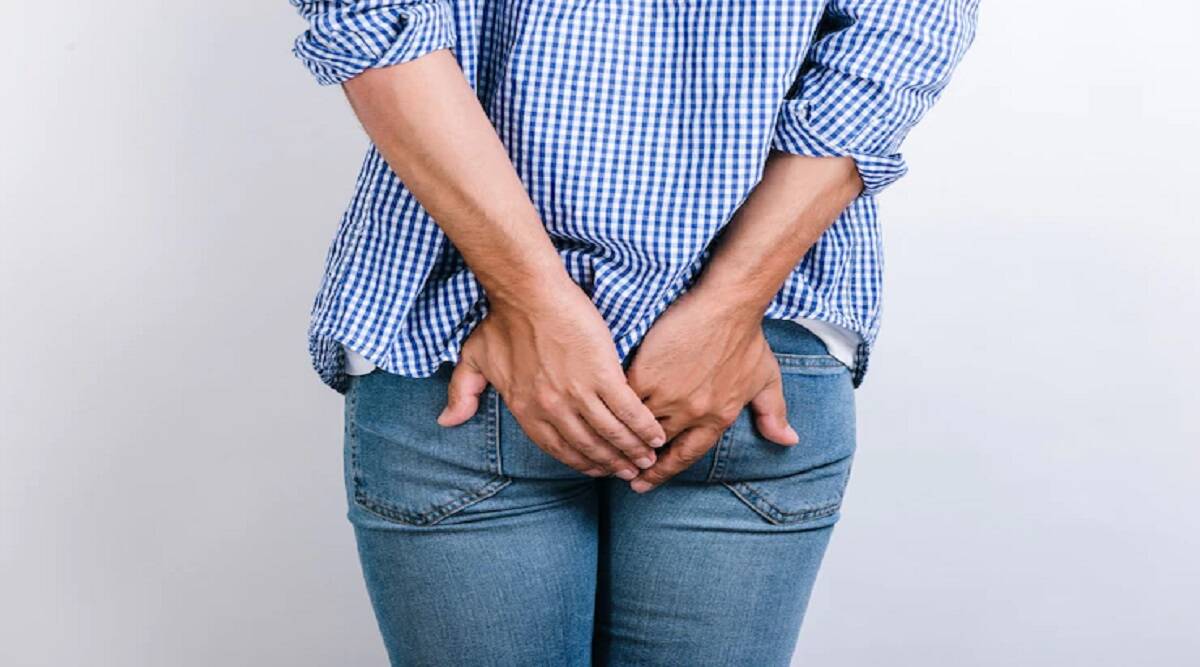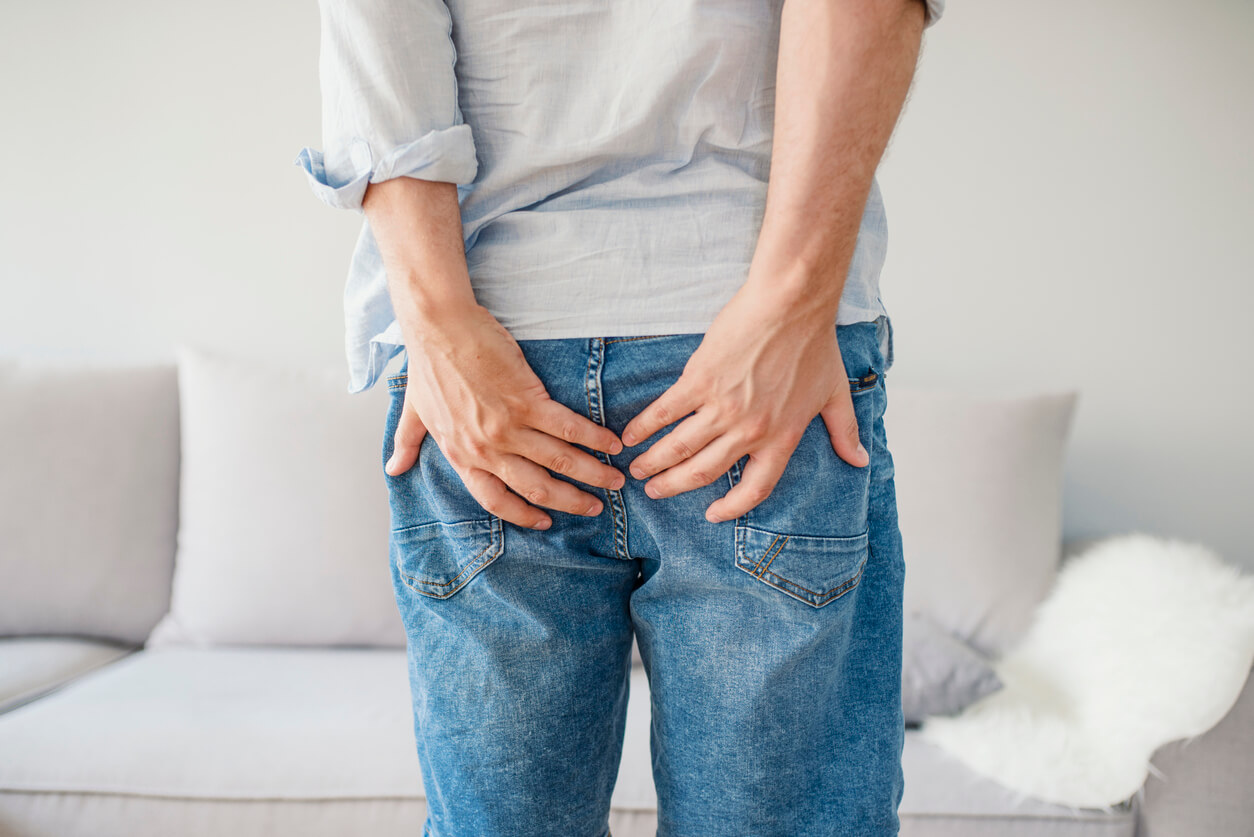Piles Symptoms In Females: Types, Causes, Diagnosis & Treatment
Piles can happen in both males and females, but now the question appears what are the symptoms of piles in females? Piles are inflamed and bulging veins in the rectum or anus caused by a clot. Pain, itching, and bleeding around the anal region are all common signs of this condition.
Non-prescription ointments, various home remedies, and dietary modifications are often used to treat and prevent acne. If your hemorrhoids don’t go away on their own, you may need to see your doctor and, in some situations, have minor surgery.
Inflamed and bloated groups of tissue and vasculature are called piles. It’s a widespread illness that strikes both sexes equally.
Half of the population has piles at some time in their lives, according to research. After giving birth, pregnant women are more likely to experience the discomfort of piles.
Hemorrhoids, a group of blood vessels in the anal canal, aid in the regulation of bowel movements. In their natural condition, they form an arteriovenous network and connective tissue cushion that eases the passing of feces.
When bloated or irritated, they have a pathological appearance (piles). Piles are a frequent medical condition that may afflict both sexes and people of any age.
Constantly elevated venous pressure is the underlying cause of these. Constipation, severe straining when passing gas, and chronic diarrhoea are other potential triggers.
These growths often take the form of tiny, spherical, discoloured bumps. These masses might be felt on the anus or dangling from the anal canal in certain cases.
These bumps may be quite uncomfortable, and they may bleed if they are injured.
The goal of the various treatments for piles is to alleviate the symptoms and provide the patient with some much-needed respite.
Table of Contents
What Are Piles Or Hemorrhoids?
Many individuals have trouble defecating because of constipation. This leads to straining during bowel motions, which in turn leads to the development of piles.
Pile difficulties are also more common in the obese and those whose jobs require them to stand for lengthy periods of time.

Hemorrhoids are more often referred to as “piles” in everyday language. Since every person has hemorrhoids, the severity of the piles is the key diagnostic factor, as shown by a number of studies.
Pile disease is frequent in women over the age of 40 and may even harm pregnant women.
Hemorrhoids, or piles, are irritated areas where blood vessels in the lower rectum or anal become enlarged due to stretching.
Although piles may be uncomfortable, for the typical anal tissues to hurt and swell to that degree, it suggests something really serious may have caused it.
Causes
The specific etiology of hemorrhoids is still a mystery. But they are connected with an increase in pressure in the lower rectum, which may cause the blood vessels in the lower rectum to become enlarged and irritated due to the increased pressure.
The following variables may raise the pressure inside the lower rectum, increasing the likelihood of developing hemorrhoids as a result of the increased pressure:
- Attempting to have a bowel movement with difficulty
- For lengthy periods, particularly on the toilet, it is not recommended.
- Constipation or diarrhea that is chronic (that lasts a long time).
- Being overweight or obese is a health risk.
- Pregnancy
- Interaction between the sexes
- Dietary fiber intake is inadequate.
- Spinal cord damage is a kind of injury to the spinal cord.
- Having a bad posture
- Hemorrhoids have run in the family.
Hemorrhoids are a prevalent condition that affects almost everyone at some point throughout their life. Their occurrence increases with age, owing to the weakening and straining of the connective tissues that support the veins in the rectum and anus, which causes them to become more common.
What Are The Causes & Reasons For Piles In Females?
Several different factors may contribute to the development of piles in females. The following are some of the most frequent risk factors that may enhance the likelihood of developing piles.
Intended Mothers
At about the 36-week mark of pregnancy, the uterus expands to accommodate the growing fetus, placing pressure on the pelvic region and triggering an immediate enlargement of the anal and rectal blood vessels and the development of piles. These piles often disappear once a child is born.
Constipation
Although everybody is vulnerable to this, pregnant women are more vulnerable. Constipation is common throughout pregnancy, and may even persist after delivery. Constipation, brought on by a diet low in fiber, puts extra pressure on the anal canal, increasing the risk of developing piles or hemorrhoids.
Diarrhea
People who experience diarrhea regularly or for an extended length of time are at increased risk of developing piles. Hemorrhoids are prone to irritation, swelling, inflammation, and discomfort, all of which may be exacerbated by diarrhea.
Requires a lot of time to sit down
Workplaces that demand prolonged sitting may inflict stress on workers of both sexes, leading to a widening of the gluteal muscles and a resulting decrease in hip mobility. Pain and swelling in the veins are caused by the stretching of the tiny veins surrounding the anus and rectum.
Aging
Those over the age of 50 have the highest prevalence of hemorrhoids. However, hemorrhoids are not limited to adults and may also affect young individuals.
Laborious Effort Required
Workout junkies and weightlifters who push themselves too far are at increased risk for hemorrhoids.
Types Of Piles
Internal piles and exterior heaps are the two main types of piles.
Internal piles, despite the name, may manifest outside of the anus as well as within. If and how far these heaps extend from the anus are used to further categorise them. Their classifications are as follows:
- First-degree piles do not protrude through the anus but might bleed.
- To a lesser extent, they re-enter the body after leaving after a bowel movement (the second degree).
- They give you the third degree when they seem to be coming out but then retreat back inside at the slightest prod.
- They are partly outside your anus and can’t be pulled back in any farther. If blood clots form within the tumor, it may grow and cause excruciating discomfort.
However, external piles develop outside of the anal canal, usually in the area around the anus. If blood clots form inside the bumps, they may be just as painful.

Hemorrhoids, you should know, may develop everywhere, not only in the rectum or anal canal. What type of hemorrhoid has occurs depends on where the swelling has been found:
External
Hemorrhoids outside the anus cause the veins outside the anus to enlarge, hemorrhage, break, and itch. Depending on how bad the piles are, they might fill with blood and clot. These are not harmful, but they may cause a lot of discomforts and even swelling and agony.
Internal
Inside the rectum, these are hemorrhoids. Although they are seldom seen or felt externally, internal hemorrhoids may cause excruciating pain. Having these hemorrhoids isn’t painful in and of itself, but it may make bowel movements difficult and even painful. The patient may find very little blood loss in the bathroom sink.
Prolapse
Occasionally, both internal and external hemorrhoids prolapse, or push through the anus or anal canal. Some people have discomfort or bleeding from these hemorrhoids.
Piles Symptoms In Females
The location of hemorrhoids on the body, whether inside or outside, has a significant impact on the symptoms.
Internal hemorrhoids are located inside the rectum and do not produce pain. In contrast, straining or discomfort when passing a stool may cause damage to the surface of the hemorrhoid, resulting in its bleeding.
Sometimes, straining may induce internal hemorrhoids to protrude or prolapse through the anal orifice, resulting in discomfort and irritation when the hemorrhoid protrudes or prolapses.
External hemorrhoids are a collection of blood vessels beneath the skin surrounding the anus. Irritation may cause them to itch or even bleed. Blood can collect within the external hemorrhoids and form a clot, which may cause extreme discomfort, swelling, and irritation. If this happens, seek medical attention immediately.
The following are examples of signs and symptoms of hemorrhoids:
- Pain or discomfort, particularly while sitting
- Constipation is a source of discomfort.
- Itching or irritation in the vicinity of the anal area
- Bright crimson blood in your stools, toilet paper, or in the toilet bowl is a sign of a blood transfusion.
- An increase in swelling around the anus
- The presence of a lump or many lumps around the anus that may be sensitive or unpleasant
People often attribute their unpleasant bowel motions to their hemorrhoids. Hemorrhoids are a common source of discomfort, including itching, sensitivity, and irritation, but they may also cause pain during bowel movements.
However, OTC ointments/suppositories may be used by the patient to alleviate discomfort and irritation associated with defecation and squatting. Fiber supplements make bowel movements less of a chore.

A Painful Bulge Or Swelling Around The Anus
In certain cases, a patient with piles may have uncomfortable swelling or a firm, unpleasant mass close to the anus. External hemorrhoids, which are often felt near the anal border, are a possible cause of excessive skin tags.
Secondary skin infections may develop due to difficulty in cleaning up after bowel movements. In severe cases, surgery may be recommended.
Itchiness In The Genital Area
There are two types of hemorrhoids, internal and external. Hemorrhoids are situated under the skin near the anus, while piles are found within the rectum.
The mucus that is released from a prolapsed internal hemorrhoid may cause extreme irritation to the delicate tissue surrounding the anus, leading to acute itching. An increase in discomfort and itching might occur if feces were to come into contact with mucus.
Release Of Mucus From The Anus
Sometimes mucus leaks out of the anus because of a swollen, enlarged hemorrhoid. Possible indicator of infection. The anus and the space around it should be kept clean at all times.
After relieving oneself, you may use water containing potassium permanganate crystals to clean the area. The patient is recommended for surgery if the mucus discharge and discomfort persist.
Tight, Solid Mass In The Region Of The Anus
The anus is the opening in the lower digestive system. The anal and rectus muscles are separated by the internal anal sphincter. The sphincter muscle relaxes when the rectum is full, allowing feces to flow through the anus and out of the body.
The external anal sphincter is responsible for sealing up the anus after bowel movements. Difficulty, discomfort, and discharge are only some of the side effects of anus lumps.
An assessment is warranted, despite the fact that an anal lump is not usually life-threatening. The patient needs emergency medical care if he has persistent bleeding, discomfort, a hardened lump, and a fever.
Irritated And Crimson, The Anorectal Region
The anus is a common site of discomfort for piles patients, and the skin surrounding the anus may become inflamed and irritated. The redness and pain surrounding the anus are usually caused by straining during feces, however infections may also be a factor.
Creams that reduce inflammation may be purchased over the counter or with a prescription. The outcome would improve if you used them. If you want to prevent painful skin, refrain from scratching.
Treatment Of Piles In Females
The following are some piles treatments that might help alleviate hemorrhoid problems.
- Pain, swelling, and inflammation may all be alleviated using over-the-counter ointments and lotions.
- A sitz bath, also known as a hip bath, helps reduce inflammation, discomfort, and speed recovery from anal fissures. Simply sitting in a tub of warm water and letting your rectal region soak for at least two to three minutes at a time is a sitz bath.
- Constipation may be alleviated with the use of fiber supplements if taken as directed.
- Applying cold packs to alleviate pain and swelling
- Hemorrhoidectomy, in which huge external hemorrhoids are removed, or hemorrhoid stapling, in which a tool similar to a stapler is used to remove the inside hemorrhoids, are the last resorts if non-medical treatments fail.
Back in the day, your only choice was open surgery. However, modern minimally invasive techniques have changed how physicians think about treating their patients. The “Minimally Invasive Procedure for Haemorrhoids,” also known as “Stapler Haemorrhoidectomy,” is a new treatment for hemorrhoids.
The procedure, which involves the use of a stapling device, takes advantage of the absence of pain-sensing nerve fibres in the upper anal canal.
Bleeding and prolapse are treated by removing mucosa above the dentate line (which contains part of the pile mass) and stapling it in place using a stapler gun.

Within the stapler’s cup-shaped chamber, the pile masses are crushed. The titanium staplers are fired at once and cut and seal, so there is very little bleeding.
If the incision is made above the nerves, recovery will be quicker and less painful.
There is no need for postoperative dressing since no incision is made in the perianal skin or the lower portion of the anal canal, and the lesion in the anal mucosa is also largely closed with a stapler. It reduces discomfort and expedites healing time.
Diagnosing Piles
A general practitioner would do a physical examination and symptom history. The rectum and the existence of lumps may be felt by inserting a gloved finger into the anus. Rectal examinations may also include the use of a proctoscope to examine the organ’s inner workings.
The doctor may also recommend a blood test to determine whether or not you have anemia, a disease in which your body produces too few red blood cells. The presence of anemia may indicate that the pile’s issue is serious.
If the doctor thinks the symptoms may be related to anything else, he or she will likely order further diagnostic procedures.
How Can You Prevent Piles In Females?
Consuming foods that cause soft stools is the greatest approach to avoid developing piles. Here are some tried-and-true methods for avoiding hemorrhoids and relieving their symptoms.
- Fruits, vegetables, and whole grains are all great sources of fiber. This aids in easing the passage of stool. The danger of developing hemorrhoids is decreased because of the relief from straining and pressure on the anal canal.
- Keeping healthy and active may help ease vein pressure, as can limiting one’s sitting time.
- Be sure to stay hydrated; eight 8-ounce glasses of water a day can do wonders for maintaining a soft stool.
- To relieve stress on the anal canal, use the restroom whenever you feel the urge.
- It’s particularly important for pregnant women to avoid consuming meals that are difficult to digest since doing so might cause dangerous strain on the anus.
- Keep your weight where it should be, since being overweight raises your chance of developing hemorrhoids.
In Conclusion
A shocking 40-50% of the population suffers from hemorrhoids. Pile symptoms in both sexes may be severe, even after attempting home cures and making appropriate lifestyle modifications.
Hemorrhoids that last longer than a week usually need prompt medical attention. Schedule time with our top expert if you want answers or tailored guidance.
